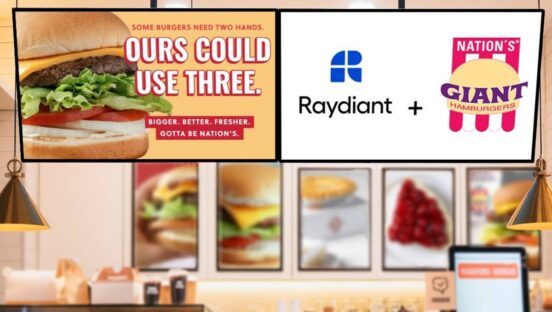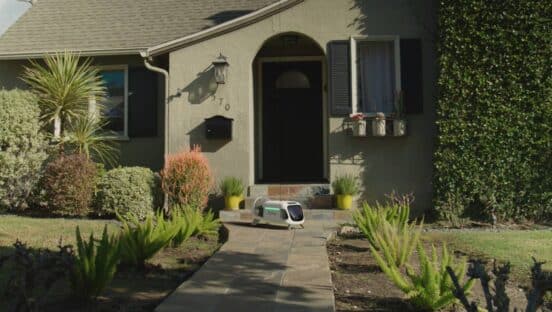Over the past two years, the pandemic has made a major impact on the restaurant industry and how it has operated. Restaurants have also been able to rapidly evolve in this new climate, quickly adapting to balance customer’s needs and government mandates. One of the most popular trends for consumers is ghost kitchens.
Ghost kitchens are a food and cooking facility set up for preparation of delivery-only meals. There is no brick-and-mortar location for patrons to dine. Ghost kitchens minimize the costs of rental space, staffing, and menu engineering. They receive their income by delivering food made by the restaurant or through a third-party service.
Many people think ghost kitchens are a result of the pandemic. However, they’ve been around since 2015 and have greatly increased in popularity since the pandemic started. According to a recent study, sales made by ghost restaurants in the U.S. are projected to rise by 25 percent for the next five years. This totals an estimated $300 million in yearly sales.
In terms of popularity, currently the U.S. is home to 1,500 ghost kitchens. The concept of ghost kitchens has been accelerated by the effects of the pandemic. Coming into COVID, off-premises sales increased nearly four times faster than dine-in business, accounting for about 80 percent of restaurants’ U.S. dollar sales growth over the last three years.
In 2019, ghost kitchens saw a $1.9 billion dollar investment across 16 deals and at the end of 2020 ghost restaurants had 59 leading companies. By 2030, the kitchens are predicted to hold a 50 percent share of drive-thru and takeaway foodservice markets worldwide. Seeing the success of ghost kitchens, many big investors are starting their own kitchens with varying scope and tactics. However, many small operators are testing ghost kitchens in markets across the U.S. with many shared food production kitchens handling delivery orders.
At the start of the pandemic, restaurants saw a 100 percent decrease in indoor seated dining worldwide. The growth of ghost kitchen market was made possible by the massive increase in customers ordering food via delivery. In addition, there doesn’t seem to be any patron discomfort with ordering food online. Fifty-two percent of customers feel confident ordering from a delivery-only restaurant with no physical storefront.
As with any concept, there are pros and cons. One of the most valuable benefits of a ghost kitchen include lowering overall costs. Ghost kitchen operators reduce all overhead costs associated with buying or renting a commercial space. Centering on the details, ghost restaurants reduce the cost on menu adjustments because if something needs to be changed, the update can be remedied online instead of a reprint of physical copies. Their labor rates are lower as they essentially only employ the “back of the house” rather than also serving the customer at the “front of the house,” decreasing wages.
Ghost restaurants have the ability to place their products on as many third-party delivery platforms as they desire. This is in addition to their own website to generate a greater outreach.
Some things to keep in mind are third-party delivery fee concerns. It’s well-known that third-party delivery services can get quite costly since aggregators collect a certain percentage from orders sold or service fees on each transaction made on the platform. Without proper monitoring, this can affect a restaurants overall margin.
Ghost restaurant owners have a unique marketing responsibility that differs from owners who have a traditional restaurant storefront. Since ghost restaurant owners do not depend on walk-in diners and strictly function in an online space, it puts a significant amount of pressure digital marketing to gain customer support and interest.
Ghost kitchens are also reliant on the customer facing interface to be someone other than their own team member. By outsourcing the delivery, the last touch (and first impression) for the customer, outside of the digital space is that of a third party, not a loyal employee of the brand.
Ghost kitchens have the ability to relocate where the demand is highest and adjust to customer preferences efficiently. Many popular restaurants are jumping on the opportunity that ghost kitchens offer, especially as owners navigate wave after wave of the pandemic and the corresponding actions that inevitably come with it.
As customers rely more and more on contactless food delivery, new ways to get their favorite meals fast, it’s worth recognizing the ghost kitchens that produce the most successful results are the concepts based on businesses that people have visited before. When ordering from the third-party app, customers don’t know or necessarily care where the food is being made, only that it’s the brand they know and want.
In the future, ghost kitchens will continue to linger, but as people start to feel safer returning to restaurants, it will take on a new form, adapting to customer trends. Ghost kitchens will never fully replace the dining experience which people have embraced since the beginning of time, but it looks like it will be around for the foreseeable future.
Robin Gagnon is the CEO and Co-Founder of We Sell Restaurants, the nation’s largest restaurant brokerage firm and the only national franchise specializing in restaurant sales.












